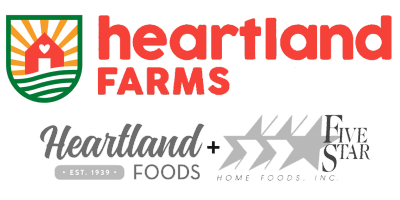~ Growing Green: Sustainable Farming in the Spring ~

pring is a season of renewal, growth, and rejuvenation. For sustainable cattle, pig, and chicken farms, spring is a critical time of the year. It marks the beginning of the grazing season, the start of planting and cultivation, and the return of fresh, nutritious grasses and plants. Spring is also an exciting season for organic produce farming as it marks the beginning of a new growing season.
Sustainable organic produce farming is an approach to agriculture that focuses on producing crops in a way that protects the environment, human health, and animal welfare. It involves using natural and organic farming practices that promote soil health, biodiversity, and the conservation of resources. Organic farmers use practices such as crop rotation, cover cropping, and composting to improve soil fertility and structure. These practices increase the soil’s ability to retain water, nutrients, and organic matter, which are essential for plant growth. Healthy soil also supports a diverse community of microorganisms that help break down organic matter, suppress plant diseases, and fix nitrogen from the air.
pring is a season of renewal, growth, and rejuvenation. For sustainable cattle, pig, and chicken farms, spring is a critical time of the year. It marks the beginning of the grazing season, the start of planting and cultivation, and the return of fresh, nutritious grasses and plants. Spring is also an exciting season for organic produce farming as it marks the beginning of a new growing season.
Sustainable organic produce farming is an approach to agriculture that focuses on producing crops in a way that protects the environment, human health, and animal welfare. It involves using natural and organic farming practices that promote soil health, biodiversity, and the conservation of resources. Organic farmers use practices such as crop rotation, cover cropping, and composting to improve soil fertility and structure. These practices increase the soil’s ability to retain water, nutrients, and organic matter, which are essential for plant growth. Healthy soil also supports a diverse community of microorganisms that help break down organic matter, suppress plant diseases, and fix nitrogen from the air.
The return of Persephone marks the beginning of the growing season, with farmers planting crops and tending to the land in preparation for the summer harvest. For our area, the Persephone period is from November 14 to January 28. The days are gradually getting longer (today, March 27th, there are 13 hours and 19 minutes of light—hooray!) until the first day of spring in mid-March when we reach 12 hours of daylight. As a grower, it’s important to know when your Persephone period is because most plants won’t grow when there are less than 10 hours of daylight.
Spring is a critical time of the year for sustainable cattle, pig, and chicken farms. With the arrival of warmer temperatures and longer days, animals can move from indoor feeding to pasture grazing. The grazing season, the return of fresh, nutritious grasses and plants, and the beginning of planting and cultivation create a shift in diet that not only promotes animal health and wellbeing but also helps to regenerate the soil by promoting biodiversity and natural nutrient cycling. These factors all contribute to the health and wellbeing of the livestock, as well as promoting biodiversity, natural nutrient cycling, and sustainable agriculture practices.

Spring is a wonderful time for both produce and animal farming. Farmers work hard during this season to ensure that their crops and animals are well taken care of, and consumers can enjoy the fresh, flavorful foods that result from their efforts. Its a time of growth and renewal in the world of agriculture, and it is a season that many farmers and food lovers eagerly anticipate each year.


